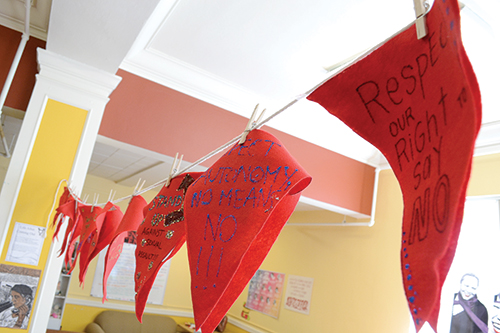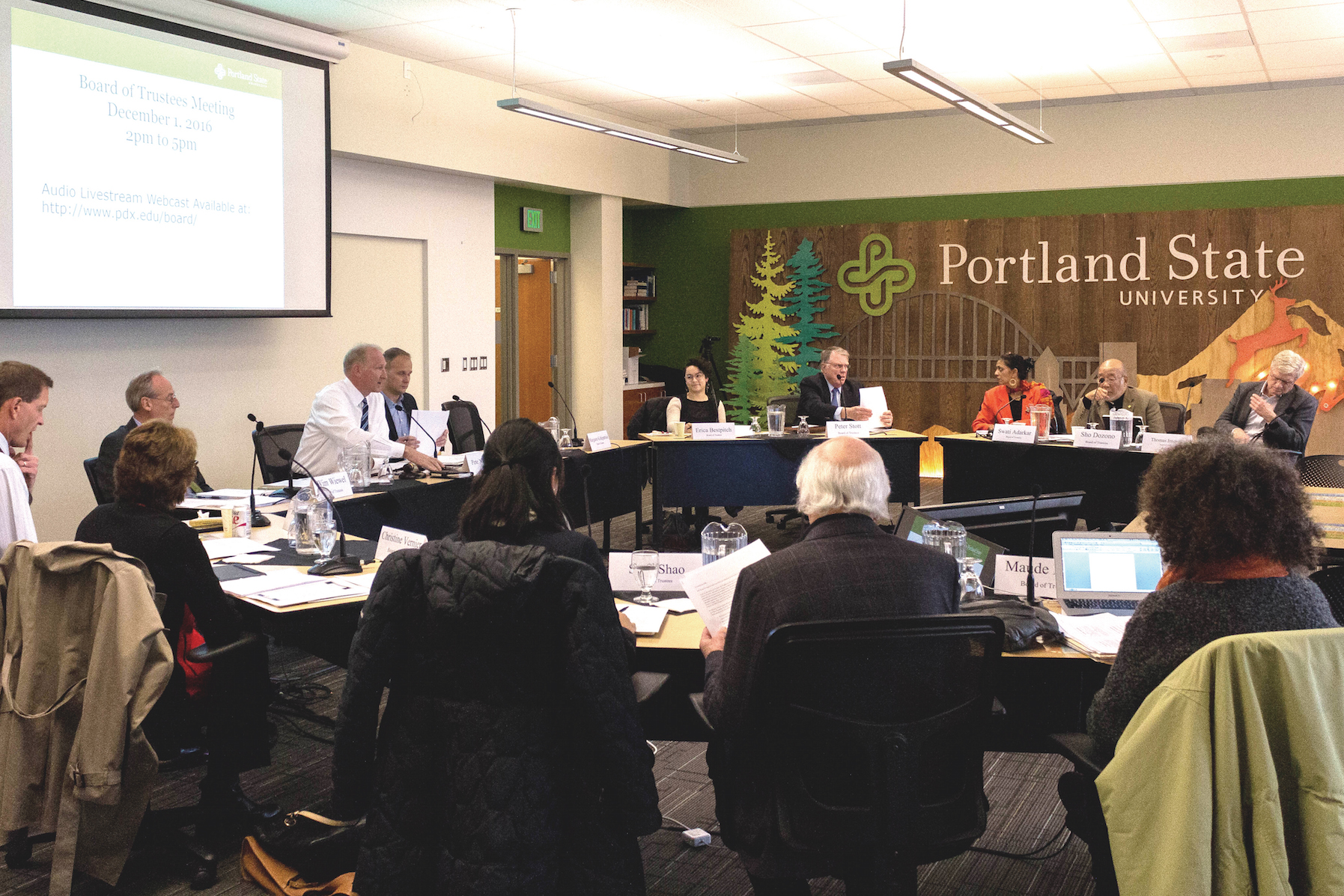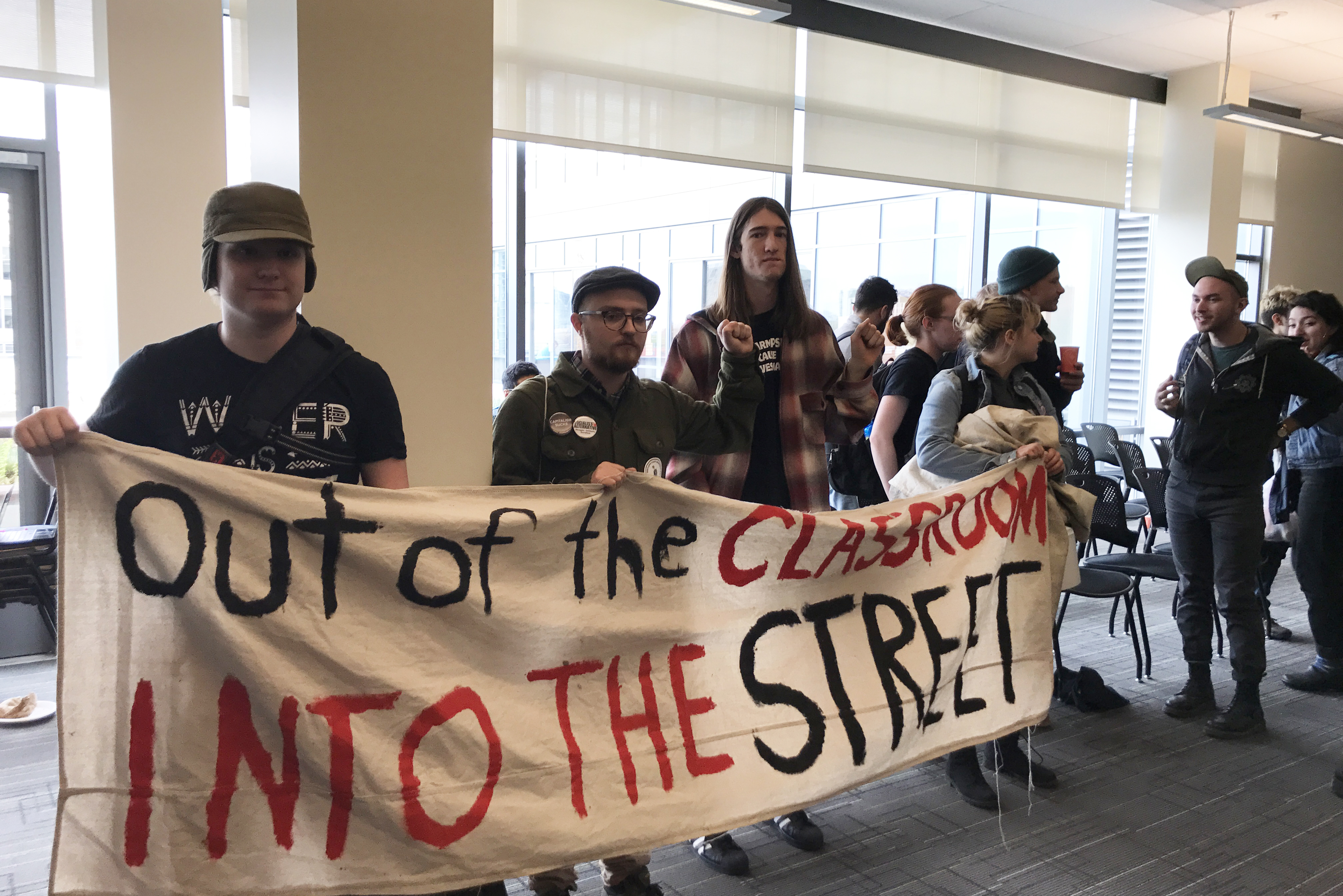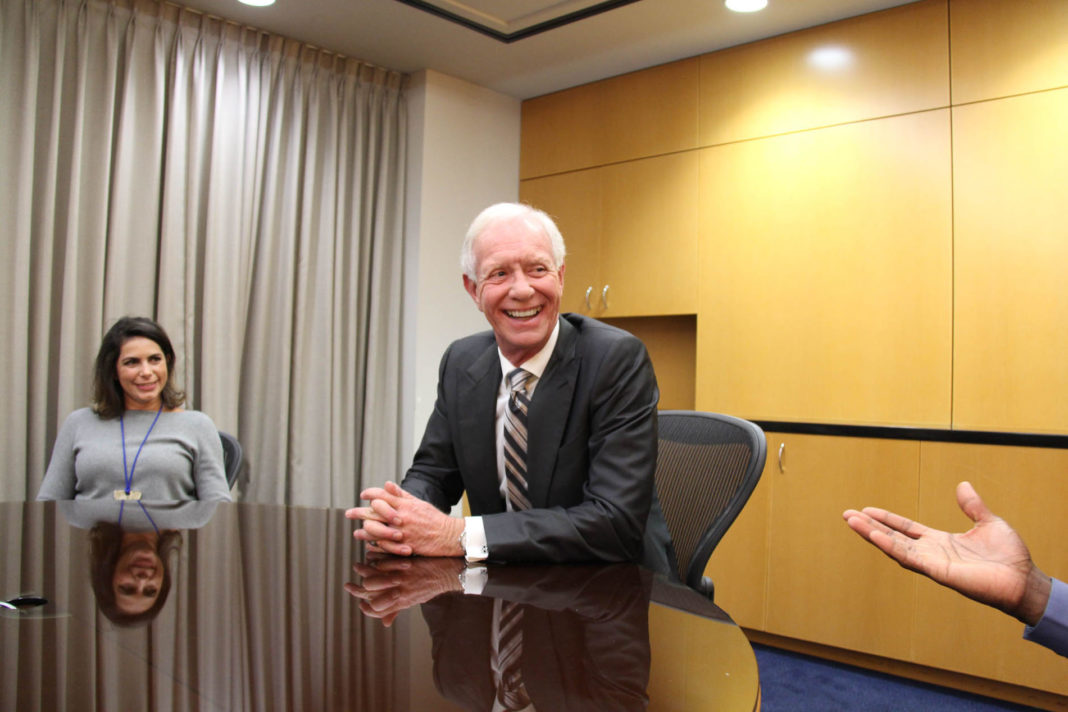Portland State’s Women, Gender, and Sexuality Studies presented its 11th annual WGSS Student Research Colloquium on April 7, 2017. The theme of this year’s day-long, free-to-the-public event was “From Margin to Center: Conceptualizing and Addressing Exclusion.”
Dr. Kemi Adeyemi, Ph.D., professor in the gender, women, and sexuality studies department at the University of Washington in Seattle, led this year’s keynote. Adayemi addressed the audience over lunch about “critical black apathy” through history, popular culture, and visual art.
Attendees chose to partake in several of the event’s 10 breakout sessions, which featured 19 WGSS students presenting their research, writing, or visual art pieces related to topics such as “Black Femininity and Masculinity,” “Art as Resistance,” and “Feminist Critique of Feminisms,” among others.
Brierly Harris, a second-year M.A. student in the English department, and Angeliza Paz Ortiz, a student in the WGSS department, both led a literary analysis of James Baldwin’s 1956 novel Giovanni’s Room. Introducing the topics of “hetero-normative” traditions and “straight vs. queer time,” Harris and Paz Ortiz discussed how traditional heterosexual, or hetero-normative relationships have attempted to reproduce a heterosexual, often white legacy, while queer and people of color relationships are not offered this norm.
Specifically claiming that black identity is not hetero-normative, Paz Ortiz explained that traditional heterosexual relationships “are very concerned with hetero legacy,” while black men, historically portrayed in violence and criticized for their family structure “are not afforded humanity or access to a norm.” Paz Ortiz said she believed hetero-normativity is only offered to “a very exclusive set of people.” Both Harris and Paz Ortiz explained that, as a result, many heterosexual relationships can be non-hetero-normative.
In the “Art as Resistance” session, students Leo Ariel Abbot, Mason Mimi, and Alexa Climaldi presented their visual art as a means of resisting white supremacy, beauty standards, and social pressures put upon mixed-race individuals.
Abbot presented an altar display that combined elements such as gold, roses, and plant materials that combine elements of their queer, Latinx, and spiritual identities.
Mimi displayed poems about their formerly-imprisoned father and photos of friends that chose to show body parts they feel self-conscious about.
“Art is resistance because you can support so many people for the art they do,” Mimi said about the breakout session’s theme. “Your art does not always have to be so serious. Resistance can be joyful.”
Climaldi’s zine, Tiger’s Blood, combines parts of her Korean and American identities. The zine includes a traditional Korean kimchi recipe, which Climaldi learned herself. Korean tradition “was a birthright I was not granted,” Climaldi said.
Abbot asked that the audience keep at least one foot of physical distance from their piece, an act of respect and symbolism. “Look but don’t touch,” Abbot said. “People of color have their space invaded so often, like their hair [being touched].”
Another breakout session discussed transphobia and microaggressions on campus. Psychology major Charley Breyer said the university should “prioritize students over investors and trustees,” while Paz Ortiz explained that one-sentence blurbs in class syllabi about campus resource centers is not enough to support marginalized students. Paz Ortiz’ statement, “More needs to be done in the classroom,” echoed opinions about PSU’s recent LGBTQ-friendly campus designation.
Keynote speaker Adeyemi addressed apathy toward the deaths of queer black women “that have been pushed under the rug” and the black community in Flint, Michigan.
“To consider critical black apathy is to understand on the one hand that black people have complex interior lives, and on the other hand, that black people are indeed human,” Adeyemi said. “[These are] facts that continually need to be iterated every time a cop is acquitted of murder and black people protest, when the deaths of trans women go unremarked upon and black people protest.”
Adeyemi presented photos of an art display and black fashion in the 1940s that represent a “structured indifference that emerges from the entanglements of play and pain that infuse queer of color everyday life, and that are always expressed through and against the built environment.”
Through provoking discussions, art, poetry, and research presentations, the WGSS colloquium addressed the psychology, social structure, and problems experienced by marginalized groups. Although presentations sparked academic discussions about queer theory and feminism, the event targeted a general audience. The colloquium will convene again next April. Until then, the planning committee will review candidates from up and down the West Coast to present the keynote at next year’s event.






